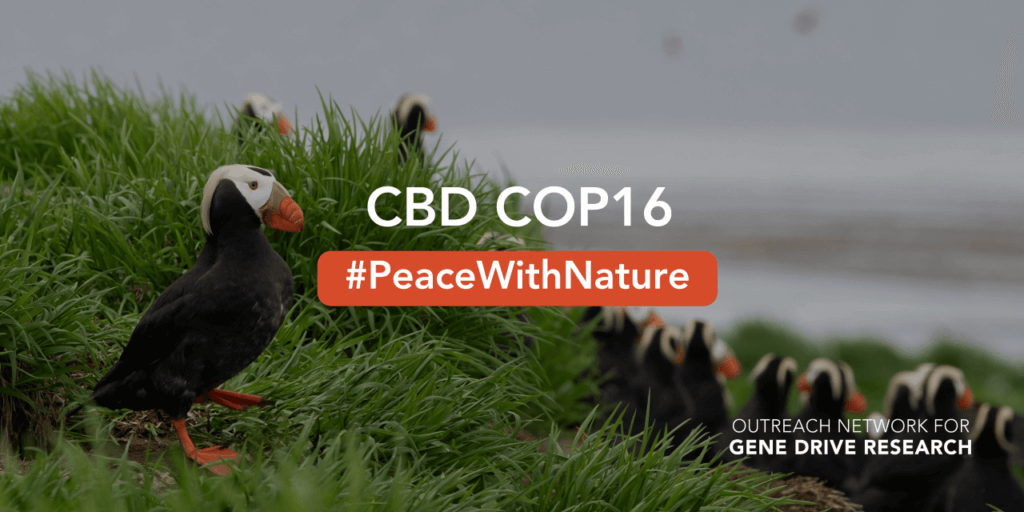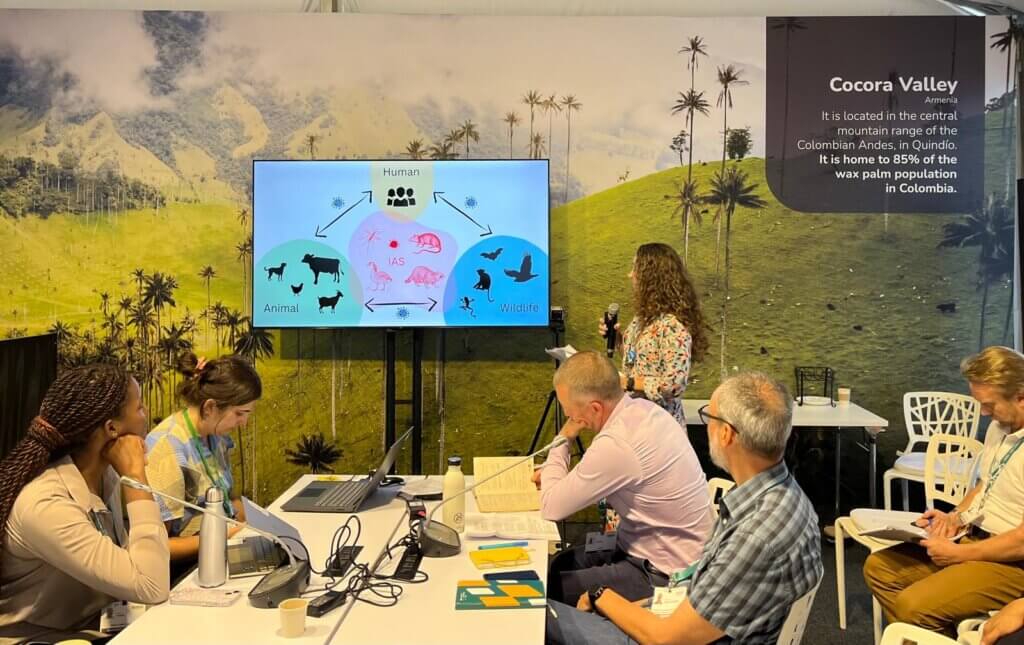COP 16 highlights: A new path for peace with nature

The Sixteenth meeting of the Conference of the Parties to the Convention on Biological Diversity (COP 16) came to a close on November 2 in Colombia. Despite marathon negotiations, the world’s largest nature conservation conference was suspended before finalizing a few items, but discussions will resume at a future date to conclude the unfinished agenda.

In Cali, Parties welcomed with appreciation the new and voluntary risk assessment guidance for LMOs containing engineered gene drives. This guidance is aligned with CBD and international best practices in the field, embracing science-based assessment and case-by-case approach vis-à-vis the complexity of gene drive organisms and differences in their application and use context. The Secretariat will help implement this guidance, with an emphasis on capacity-building, which will complement existing guidance and regulatory frameworks.
Outcomes on the synthetic biology front were also positive. CBD will develop a capacity-building action to enable countries to develop, use and benefit from synthetic biology tools, ultimately reducing inequalities in this field. Additionally, a newly formed expert group will help identify synthetic biology’s benefits, as well as its positive and negative impacts in regard to the Convention and the implementation of the Kunming-Montreal Global Biodiversity Framework (KMGBF).
A key highlight of COP 16 was the growing focus on the interlinkages between biodiversity and health. Parties approved a Global Action Plan on Biodiversity and Health designed to help curb the emergence of zoonotic diseases, prevent non-communicable diseases, and promote sustainable ecosystems. The plan recognizes the benefits of biotechnology for biodiversity and health and acknowledges the need to eradicate invasive species, which are responsible for 90% of global extinctions on islands and for the spread of arboviruses, such as dengue fever.
The summit in Cali was also the first since the Kunming-Montreal Global Biodiversity Framework (KMGBF) adoption in 2022. This time, Parties negotiated the indicators to track progress on KMGBF targets. The headline indicator for Target 17 on biotechnology reflects the careful and intensely debated compromise reached during COP 15 to balance risks and benefits of biotechnology. However, Parties missed the opportunity to emphasize the importance of capacity-building in this field by removing the binary indicator that would measure progress in this area.

Carolina Torres Trueba, Island Conservation, presenting at the “Addressing the impact of vector-borne diseases on biodiversity and health” side event in Cali
Two relevant events were also held on the sidelines of the meetings in Cali. Island Conservation and Re:wild co-hosted a panel showcasing how innovative approaches could be leveraged to address the impact of vector-borne diseases on biodiversity and health. The event featured experts from both organizations and from Transmission Zero and Instituto Tecnológico Vale (ITV).
Representatives from Conservation X Labs, Target Malaria, Leibniz Institute for Zoo and Wildlife Research, The Coalition for Conservation Genetics, and the South African National Biodiversity Institute (SANBI), participated in a panel discussion at the IUCN Pavilion. The session highlighted how new tools – from genomics to data analytics and artificial intelligence – could complement existing conservation efforts and help protect biodiversity and achieve sustainable development.
Convened under the theme “Peace with Nature”, the summit in Cali underscored the urgency of collaborative efforts to address biodiversity loss. The strides made at COP 16 reflect a commitment to an ambitious and integrated path forward – one that seeks peace with nature as a guiding principle, a call-to-action and an achievable goal for the future.
Read the Outreach Network for Gene Drive Research’s Outcome Statement here.
